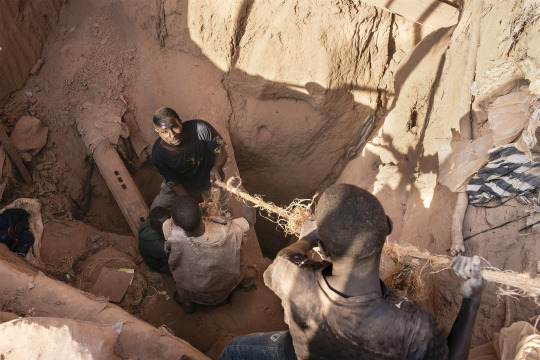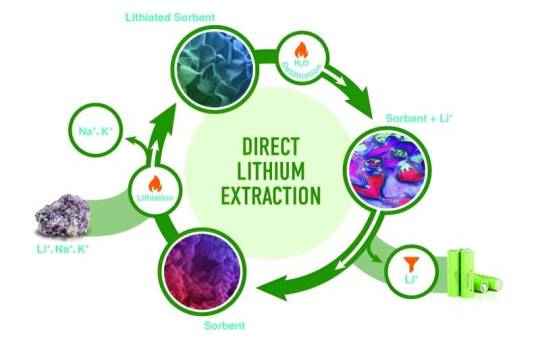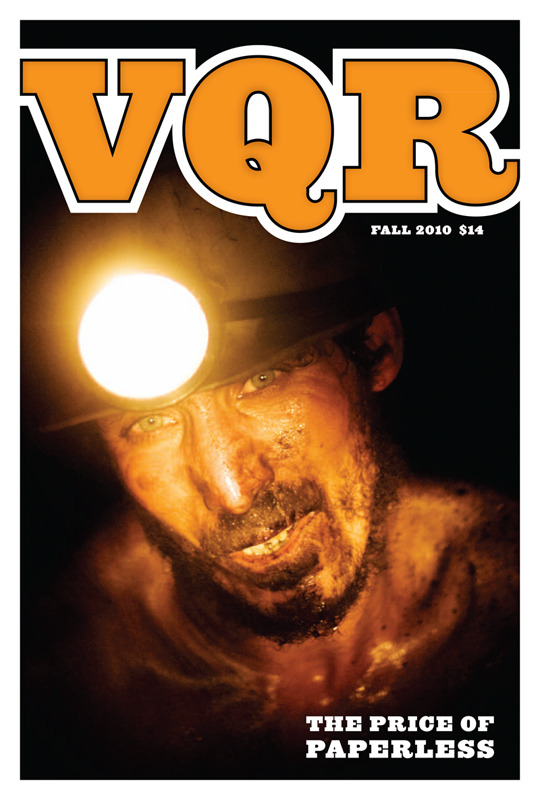#Lithium Mine
Text
In The News Today:12/26/2022.
US News, World News, Politics, Commentary.
US. News:
U.S. Aid to Ukraine Eclipses Most World Military Budgets
Efrem Lukatsky/AP
The passage of the $1.7 trillion omnibus spending bill grants Ukraine $45 billion in military and economic aid, making the total to date $113 billion.
The Quincy Institute reported that aid to Ukraine eclipsed:
American aid to any country in one year since “at…

View On WordPress
#Amala Ekpunobi#China#Commentary/Opinion#Congo#Covid- 19#Dr. John Campbell#In the News#Jan 6th.#Jordan Peterson#Lithium Batteries#Lithium Mine#Politics#Ukraine#US News#Victor Davis Hanson#World News#Year Ender 2022
5 notes
·
View notes
Text
Green energy is in its heyday.
Renewable energy sources now account for 22% of the nation’s electricity, and solar has skyrocketed eight times over in the last decade. This spring in California, wind, water, and solar power energy sources exceeded expectations, accounting for an average of 61.5 percent of the state's electricity demand across 52 days.
But green energy has a lithium problem. Lithium batteries control more than 90% of the global grid battery storage market.
That’s not just cell phones, laptops, electric toothbrushes, and tools. Scooters, e-bikes, hybrids, and electric vehicles all rely on rechargeable lithium batteries to get going.
Fortunately, this past week, Natron Energy launched its first-ever commercial-scale production of sodium-ion batteries in the U.S.
“Sodium-ion batteries offer a unique alternative to lithium-ion, with higher power, faster recharge, longer lifecycle and a completely safe and stable chemistry,” said Colin Wessells — Natron Founder and Co-CEO — at the kick-off event in Michigan.
The new sodium-ion batteries charge and discharge at rates 10 times faster than lithium-ion, with an estimated lifespan of 50,000 cycles.
Wessells said that using sodium as a primary mineral alternative eliminates industry-wide issues of worker negligence, geopolitical disruption, and the “questionable environmental impacts” inextricably linked to lithium mining.
“The electrification of our economy is dependent on the development and production of new, innovative energy storage solutions,” Wessells said.
Why are sodium batteries a better alternative to lithium?
The birth and death cycle of lithium is shadowed in environmental destruction. The process of extracting lithium pollutes the water, air, and soil, and when it’s eventually discarded, the flammable batteries are prone to bursting into flames and burning out in landfills.
There’s also a human cost. Lithium-ion materials like cobalt and nickel are not only harder to source and procure, but their supply chains are also overwhelmingly attributed to hazardous working conditions and child labor law violations.
Sodium, on the other hand, is estimated to be 1,000 times more abundant in the earth’s crust than lithium.
“Unlike lithium, sodium can be produced from an abundant material: salt,” engineer Casey Crownhart wrote in the MIT Technology Review. “Because the raw ingredients are cheap and widely available, there’s potential for sodium-ion batteries to be significantly less expensive than their lithium-ion counterparts if more companies start making more of them.”
What will these batteries be used for?
Right now, Natron has its focus set on AI models and data storage centers, which consume hefty amounts of energy. In 2023, the MIT Technology Review reported that one AI model can emit more than 626,00 pounds of carbon dioxide equivalent.
“We expect our battery solutions will be used to power the explosive growth in data centers used for Artificial Intelligence,” said Wendell Brooks, co-CEO of Natron.
“With the start of commercial-scale production here in Michigan, we are well-positioned to capitalize on the growing demand for efficient, safe, and reliable battery energy storage.”
The fast-charging energy alternative also has limitless potential on a consumer level, and Natron is eying telecommunications and EV fast-charging once it begins servicing AI data storage centers in June.
On a larger scale, sodium-ion batteries could radically change the manufacturing and production sectors — from housing energy to lower electricity costs in warehouses, to charging backup stations and powering electric vehicles, trucks, forklifts, and so on.
“I founded Natron because we saw climate change as the defining problem of our time,” Wessells said. “We believe batteries have a role to play.”
-via GoodGoodGood, May 3, 2024
--
Note: I wanted to make sure this was legit (scientifically and in general), and I'm happy to report that it really is! x, x, x, x
#batteries#lithium#lithium ion batteries#lithium battery#sodium#clean energy#energy storage#electrochemistry#lithium mining#pollution#human rights#displacement#forced labor#child labor#mining#good news#hope
3K notes
·
View notes
Text
It could be a scene from centuries ago. In the Nevada desert, Native Americans are protesting over a mining project they say desecrates sacred land.
They are riding to Sentinel Mountain, which their ancestors once used as a lookout in times gone by. Here, they say, more than 30 of their people were massacred by US cavalry in 1865.
Today, the land is at the heart of America's electric car revolution and Joe Biden's clean energy policy
Continue Reading.
195 notes
·
View notes
Text
youtube
Forced evictions, decimated villages, children can't attend school
Apple, Google, Tesla and Microsoft are among firms named in a lawsuit seeking damages over deaths and injuries of child miners in the Democratic Republic of Congo.
DR Congo produces 60% of the world's supply of cobalt.
The mineral is used to produce lithium-ion batteries used to power electric cars, laptops and smartphones.
#congo#democratic republic of the congo#cobalt#cobalt mining#tesla#apple#google#microsoft#lithium#Youtube
322 notes
·
View notes
Text
white western europeans are so funny. they really think they're better than the big mean american crackers )': I am so serious you people are worse than canadians with your unearned superiority complex. the ones who aren't just blatantly & openly racist completely downplay the prevalence of the ones who are. sit down gretal 93% of the ethnostate town you grew up in was polled saying romani deserve a second holocaust
#these types of euros also love to pretend they dont live in artificially wealthy imperialist countries that exploit poorer nations#youre still buying slave labor chocolate youre buying phones that children died to mine the lithium for you're buying sweatshop fashion#this is on my mind due to some weird world war white shit happenin on my dash over witches of all things lmao#not directed at anyone involved just brought some things to mind.#this is based on my experiences w/Certain white euros i have witnessed not anyone on here.
82 notes
·
View notes
Text



lithium burger investigating my onigiri...
#☆° mine#☆ plush: lithium burger#plushies#posic#posic community#posic companion#posicblr#plush toy#plushblr#safe plush#plush collector#plush community#plushcore#stuffies#stuffed animals
19 notes
·
View notes
Text
#mine was released in (late) 2019 so I’m calling that 5 years#one of the camera lenses has been slightly broken that whole time lol#but it doesn’t seem to affect pictures so whatever#if you have a super new phone — why?#i think the only reason I even upgraded was bc it was a Christmas gift#phones#technology#congo genocide#lithium ion batteries#tumblr polls#poll#polls#my poll#my polls#my post#original post
18 notes
·
View notes
Text

Children still mining cobalt for gadget batteries in Congo
A CBS News investigation of child labor in cobalt mines in the Democratic Republic of Congo has revealed that tens of thousands of children are growing up without a childhood today – two years after a damning Amnesty report about human rights abuses in the cobalt trade was published. The Amnesty report first revealed that cobalt mined by children was ending up in products from prominent tech companies including Apple, Microsoft, Tesla and Samsung.
There's such sensitivity around cobalt mining in the DRC that a CBS News team traveling there recently was stopped every few hundred feet while moving along dirt roads and seeing children digging for cobalt. From as young as 4 years old, children can pick cobalt out of a pile, and even those too young to work spend much of the day breathing in toxic fumes.
What's life like for kids mining cobalt for our gadgets?
So, what exactly is cobalt, and what are the health risks for those who work in the DRC's cobalt mining industry?
What is cobalt?
Cobalt – a naturally occurring element – is a critical component in lithium-ion, rechargeable batteries. In recent years, the growing global market for portable electronic devices and rechargeable batteries has fueled demand for its extraction, Amnesty said in its 2016 report. In fact, many top electronic and electric vehicle companies need cobalt to help power their products.
The element is found in other products as well.
"Cobalt-containing products include corrosion and heat-resistant alloys, hard metal (cobalt-tungsten-carbide alloy), magnets, grinding and cutting tools, pigments, paints, colored glass, surgical implants, catalysts, batteries, and cobalt-coated metal (from electroplating)," says the U.S. Centers for Disease Control and Prevention.
More than half of the world's supply of cobalt comes from the DRC, and 20 percent of that is mined by hand, according to Darton Commodities Ltd., a London-based research company that specializes in cobalt.

Health risks of chronic exposure
According to the CDC, "chronic exposure to cobalt-containing hard metal (dust or fume) can result in a serious lung disease called 'hard metal lung disease'" – a kind of pneumoconiosis, meaning a lung disease caused by inhaling dust particles. Inhalation of cobalt particles can cause respiratory sensitization, asthma, decreased pulmonary function and shortness of breath, the CDC says.
The health agency says skin contact is also a significant health concern "because dermal exposures to hard metal and cobalt salts can result in significant systemic uptake."
"Sustained exposures can cause skin sensitization, which may result in eruptions of contact dermatitis," a red, itchy skin rash, the CDC says.
Despite the health risks, researchers with Amnesty International found that most cobalt miners in Congo lack basic protective equipment like face masks, work clothing and gloves. Many of the miners the organization spoke with for its 2016 report – 90 people in total who work, or worked, in the mines – complained of frequent coughing or lung problems. Cobalt mining's dangerous impact on workers and the environment
Some women complained about the physical nature of the work, with one describing hauling 110-pound sacks of cobalt ore. "We all have problems with our lungs, and pain all over our bodies," the woman said, according to Amnesty.
Moreover, miners said unsupported mining tunnels frequently give way, and that accidents are common.
Miners know their work is dangerous, Todd C. Frankel wrote late last month in The Washington Post.
"But what's less understood are the environmental health risks posed by the extensive mining," he reported. "Southern Congo holds not only vast deposits of cobalt and copper but also uranium. Scientists have recorded alarming radioactivity levels in some mining regions. Mining waste often pollutes rivers and drinking water. The dust from the pulverized rock is known to cause breathing problems. The mining industry's toxic fallout is only now being studied by researchers, mostly in Lubumbashi, the country's mining capital."

"These job are really desired"
Despite the dangers and risks of working as miners in the cobalt industry, at least of the some miners in the Congo "love their jobs," according to Frankel.
"When I talked to the miners there, none of them want to lose their jobs or give up their jobs. They love their jobs," Frankel said Tuesday, speaking on CBSN. "In a country like Congo, mining is one of the few decently paying jobs to be had there, and so they want to hold onto these jobs."
They also want fair treatment, decent pay, and some safety, "and they would love for their kids to not work in the mines," he said.
"It's a poverty problem," Frankel said. "These parents I talked to – they don't want their kids working in these mines. The problem is that their school fees – schools cost money, and you know, food costs money, and they sort of need their kids to work in there."
Poverty also drives children into the mines instead of school – an estimated 40,000 of them work in brutal conditions starting at very young ages.
The thousands of miners who work in tunnels searching for cobalt in the country "do it because they live in one of the poorest countries in the world, and cobalt is valuable," Frankel wrote in the Washington Post article.
"Not doing enough"
CBS News spoke with some of the companies that use cobalt in their lithium-ion batteries. All of the companies acknowledged problems with the supply chain, but said they require suppliers to follow responsible sourcing guidelines. Apple, an industry leader in the fight for responsible sourcing, said walking away from the DRC "would do nothing to improve conditions for the people or the environment."
Read company responses here
Amnesty said in November, however, that "major electronics and electric vehicle companies are still not doing enough to stop human rights abuses entering their cobalt supply chains."
"As demand for rechargeable batteries grows, companies have a responsibility to prove that they are not profiting from the misery of miners working in terrible conditions in the DRC," the organization said. "The energy solutions of the future must not be built on human rights abuses."
An estimated two-thirds of children in the region of the DRC that CBS News visited recently are not in school. They're working in mines instead.
CBS News' Debora Patta spoke with an 11-year-old boy, Ziki Swaze, who has no idea how to read or write but is an expert in washing cobalt. Every evening, he returns home with a dollar or two to provide for his family.
"I have to go and work there," he told Patta, "because my grandma has a bad leg and she can't."
He said he dreams of going to school, but has always had to work instead.
"I feel very bad because I can see my friends going to school, and I am struggling," he said.
Amnesty says "it is widely recognized internationally that the involvement of children in mining constitutes one of the worst forms of child labour, which governments are required to prohibit and eliminate."
#cobalt#PD Congo#PDR Congo#cobalt mining by children#amnesty university#The toll of the cobalt mining industry on health and the environment#Congo Economic Theft#minerals#rare earth minerals#tesla#iphones#cellphone batteries#ev batteries#lithium batteries#child labour#forced child labor#poverty#systemic racism
47 notes
·
View notes
Text

Chemists invent a more efficient way to extract lithium from mining sites, oil fields, used batteries
Chemists at the Department of Energy's Oak Ridge National Laboratory have invented a more efficient way to extract lithium from waste liquids leached from mining sites, oil fields, and used batteries. They demonstrated that a common mineral can adsorb at least five times more lithium than can be collected using previously developed adsorbent materials.
"It's a low-cost, high-lithium-uptake process," said Parans Paranthaman, an ORNL Corporate Fellow and National Academy of Inventors Fellow with 58 issued patents. He led the proof-of-concept experiment with Jayanthi Kumar, an ORNL materials chemist with expertise in the design, synthesis, and characterization of layered materials.
"The key advantage is that it works in a wider pH range of 5 to 11 compared to other direct lithium extraction methods," Paranthaman said. The acid-free extraction process takes place at 140 degrees Celsius, compared to traditional methods that roast mined minerals at 250 degrees Celsius with acid or 800 to 1000 degrees Celsius without acid.
Read more.
11 notes
·
View notes
Text


@sjweminem and i are officially attached at the hip... the gruesome twosome will never die!!!
#mine turned out so messy because dennis has terrible tremours from lithium addiction#but honestly i love the way it turned out
6 notes
·
View notes
Text
"Clothing tags, travel cards, hotel room key cards, parcel labels … a whole host of components in supply chains of everything from cars to clothes. What do they have in common? RFID tags.
Every RFID (Radio Frequency Identification) tag contains a microchip and a tiny metal strip of an antenna. A cool 18bn of these are made – and disposed of – each year. And with demands for product traceability increasing, ironically in part because of concerns for the social and environmental health of the supply chain, that’s set to soar.
And guess where most of these tags end up? Yup, landfill – adding to the burgeoning volumes of e-waste polluting our soils, rivers and skies. It’s a sorry tale, but it’s one in which two young graduates of Imperial College London and Royal College of Art are putting a great big green twist. Under the name of PulpaTronics, Chloe So and Barna Soma Biro reckon they’ve hit on a beguilingly simple sounding solution: make the tags out of paper. No plastic, no chips, no metal strips. Just paper, pure and … simple … ? Well, not quite, as we shall see.
The apparent simplicity is achieved by some pretty cutting-edge technical innovation, aimed at stripping away both the metal antennae and the chips. If you can get rid of those, as Biro explains, you solve the e-waste problem at a stroke. But getting rid of things isn’t the typical approach to technical solutions, he adds. “I read a paper in Nature that set out how humans have a bias for solving problems through addition – by adding something new, rather than removing complexity, even if that’s the best approach.”
And adding stuff to a world already stuffed, as it were, can create more problems than it solves. “So that became one of the guiding principles of PulpaTronics”, he says: stripping things down “to the bare minimum, where they are still functional, but have as low an environmental impact as possible”.
...how did they achieve this magical simplification? The answer lies in lasers: these turn the paper into a conductive material, Biro explains, printing a pattern on the surface that can be ‘read’ by a scanner, rather like a QR code. It sounds like frontier technology, but it works, and PulpaTronics have patents pending to protect it.
The resulting tag comes in two forms: in one, there is still a microchip, so that it can be read by existing scanners of the sort common within retailers, for example. The more advanced version does away with the chip altogether. This will need a different kind of scanner, currently in development, which PulpaTronics envisages issuing licences for others to manufacture.
Crucially, the cost of both versions is significantly cheaper than existing RFID kit – making this a highly viable proposition. Then there are the carbon savings: up to 70% for the chipless version – so a no-brainer from a sustainability viewpoint too. All the same, industry interest was slow to start with but when PulpaTronics won a coveted Dezeen magazine award in late 2023, it snowballed, says So. Big brands such as UPS, DHL, Marks & Spencer and Decathlon came calling. “We were just bombarded.” Brands were fascinated by the innovation, she says, but even more by the price point, “because, like any business, they knew that green products can’t come with a premium”."
-via Positive.News, April 29, 2024
--
Note: I know it's still in the very early stages, but this is such a relief to see in the context of the environmental and human rights catastrophes associated with lithium mining and mining for rare earth metals, and the way that EVs and other green infrastructure are massively increasing the demand for those materials.
I'll take a future with paper-based, more humane alternatives for sure! Fingers crossed this keeps developing and develops well (and quickly).
#I do really wish it could be read by regular scanners already though#that's what I thought at first#and that would've been fucking amazing#but this is still pretty cool#electronics#science and technology#green technology#ewaste#landfill#lithium#lithium mining#human rights#environment#climate action#climate hope#rfid#rfid technology#rfid tags#good news#hope
391 notes
·
View notes
Text
The Price of Paperless

Table of Contents
Here Everything is Poison
By J. Malcolm Garcia, Photography by Darren McCollester
Fall 2010
Cold winds carry lead-filled dust from a nearby slagheap, a hundred million tonnes of toxic tailings, and scatter it on clothes hanging from laundry lines, on open buckets of drinking water, on the dirt children play in, and on the feral dogs running down alleys in this former French army barracks housing about 250 displaced Roma men, women, and children.
Editor’s Desk
The Price of the Paperless Revolution
By Ted Genoways
Reporting
Jharia Burning
By Allison Joyce, Photography by Allison Joyce
The Pit
By Nathaniel Miller
Father Copper
By Annie Murphy, Photography by Rodrigo Llano
Mother of God, Child of Zeus
By Jessica Benko, Photography by Bear Guerra
Digging Out
By Elliott D. Woods, Photography by Elliott D. Woods
The Solution: Bolivia’s Lithium Dreams
By Matthew Power, Photography by Fabio Cuttica
Tin Fever
By Delphine Schrank, Photography by Mark Craemer
Here Everything is Poison
By J. Malcolm Garcia, Photography by Darren McCollester
Essays
The Devil’s Tail: Reading From the Lives of Authors
By Robert Boyers
Fiction
Favorite Son
By Jennifer Haigh
The Digger
By Samanta Schweblin, Translated by Daniel Alarcon
Poetry
The Man
By Patrick Phillips
Work-Clothes Quilt
By Patrick Phillips
Tailing Dam of Baotou Steel
By Qin Xiaoyu
The Book of Lost Railroad Photographs
By Amy Beeder
Criticism
The Age of Inequality
By Oscar Villalon
The Activist Novelist
By Jacob Silverman
The Triumph of Capitalism
By Brian Sholis
Multimedia
The Underground Giant: Life in the Hard Rock Mines of Quebec and Ontario
By Louie Palu, Photography by Louie Palu
#article#the price of paperless#the Virginia quarterly review#green washing#lithium#mining industry#mining#paper#digital#technology#air pollution#pollution#environmental movement#environmental activism#environment#climate crisis#capitalism is a scam#congo
7 notes
·
View notes
Text
sleeps for 3 hours and wakes fully rested, jittery with energy:

#bipolar mania#mm rants#mine#actually bipolar#genuine question if lithium doesnt stop depressive episodes and it doesnt stop manic episodes THEN WHATS THE POINT
16 notes
·
View notes
Text
Here’s a link to donate
And here’s a link with some other things you can do to help (particularly for those in the US!)
#thacker pass#landback#indigenous resistance#indigenous rights#lithium mining#reno-sparks indian colony#paiute#nevada#oregon#usa#us politics#turtle island#direct action#news#ecology#peehee mu’huh
35 notes
·
View notes